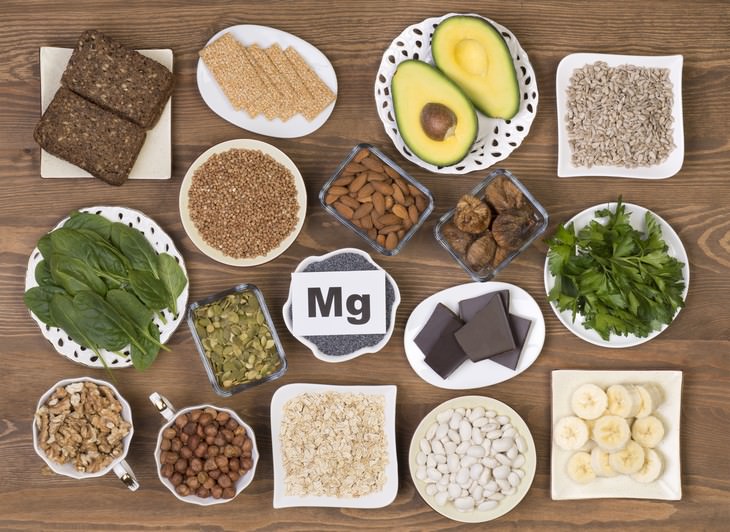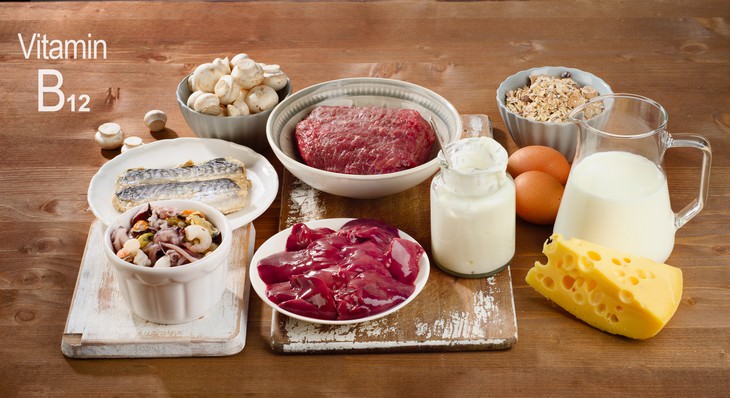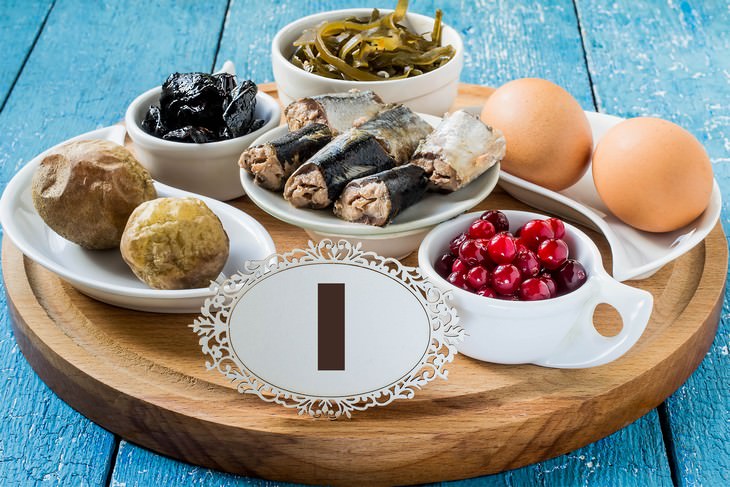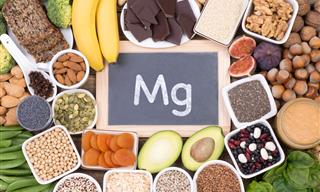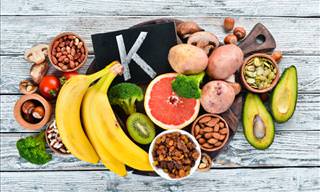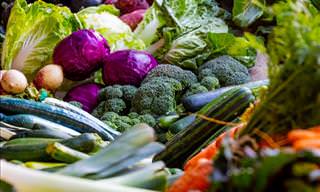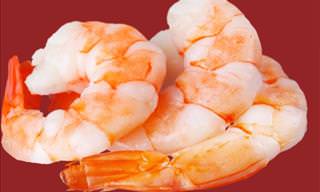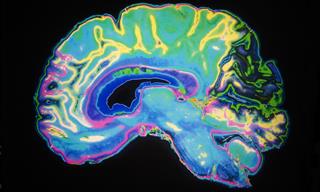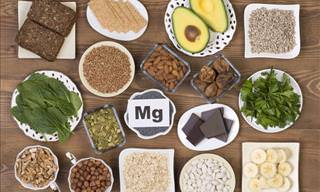1. Magnesium
People living in Western countries who typically eat a lot of processed foods and not enough leafy greens are often found to be deficient in magnesium, an essential mineral. In the US alone, about half of the population may not be getting enough magnesium from their diet.
Those who have an underlying health condition are especially likely to have lower than normal magnesium levels in their blood. Magnesium is very important and it directly influences our bone health and energy levels, but low levels of magnesium have also been linked to degenerative diseases, such as metabolic syndrome and type 2 diabetes.
Apart from that, a magnesium deficiency may manifest itself in migraines, fatigue, and restless leg syndrome. To learn more about the symptoms of magnesium deficiency, follow this link: How to Tell If You Have a Magnesium Deficiency.
The recommended daily amount of magnesium for adults is as follows:
19–30 years: 400 mg (males) and 310 mg (females).
31–50 years: 420 mg (males) and 320 mg (females).
51+ years: 420 mg (males) and 320 mg (females).
People suffering from certain conditions may require higher levels. To get enough magnesium, you may choose to take supplements and to include more magnesium-rich foods in your diet.
Foods rich in magnesium include:
- Nuts (almonds, cashews, peanuts)
- Leafy greens (spinach, kale)
- Fruit (avocados, bananas, figs, berries)
- Vegetables (peas, broccoli, asparagus, brussels sprouts, cabbage)
- Legumes (beans, lentils)
- Seafood (salmon, tuna, mackerel).
2. Iron
On average, iron deficiencies are more common among children and women of childbearing age, but it is among the most widespread deficiency in the world, affecting an estimated 25% of the people. This is alarming, as iron plays a key role in producing hemoglobin, a protein in our red blood cells that helps carry oxygen to the different cells in the body.
In turn, an iron deficiency may lead to a decreased number of red blood cells in the body, a condition also known as anemia, which causes symptoms like tiredness, a weak immune system and an inability to concentrate.
When possible, iron supplements should be avoided, unless otherwise recommended by your doctor, as excess iron intake, too, can be extremely dangerous and cause liver cirrhosis. The recommended daily intake of iron is as follows: 19-50 years: 8 mg (males) and 18 mg (females).
51+ years: 8 mg (both males and females).
Iron exists in food sources in two different forms: heme iron and nonheme iron. The former can be derived from animal foods only and is more easily metabolized by the human body. The following foods contain heme iron:
- Beef
- Liver
- Oysters
- Canned sardines
- Poultry.
Nonheme iron, on the other hand, is more widespread and exists both in plant and animal products, but it is more difficult for the human body to absorb. This explains why vegetarians and vegans, too, are more likely to suffer from iron deficiencies than those who consume animal products.
Some foods rich in nonheme iron:
- Legumes (beans, chickpeas, and lentils)
- Leafy greens (spinach, kale)
- Tomatoes
- Seeds (pumpkin and sesame)
- Dark chocolate
- Iron-fortified foods, such as oatmeal and other grains.
3. Vitamin B12
Nowadays, it’s very rare for people to suffer from vitamin C deficiency, as this vitamin is so abundant, but the horror stories of sailors suffering from scurvy grip our imaginations to this day. A more prosaic, but also more current story is that of mass vitamin B12 deficiency, with an estimated 80-90% of vegans and vegetarians suffering from this condition.
Another group often having lower-than-normal vitamin B12 levels are older adults, as the ability to absorb the vitamin decreases with age. But don’t let these trends affect you, as maintaining an adequate B12 intake will benefit your health since the vitamin is essential for every cell in the body.
Unlike many other vitamins, such as vitamin D, for example, the body cannot produce vitamin B12 on its own, so we rely on our diet completely to supply us with cobalamin (another name of vitamin B12).
Deficiency in B12 manifests itself in megaloblastic anemia, a condition where the bone marrow produces large, immature red blood cells that are much worse at carrying oxygen. This condition manifests itself in many symptoms, such as muscle weakness, shortness of breath, fatigue and other symptoms. Luckily, taking vitamin B12 in supplement form isn’t dangerous, as the vitamin is water-soluble, so any excess is easily excreted through urine.
Adults should take 2.4 micrograms of vitamin B12 every day, although you can safely take a higher amount. Seniors may require higher doses, as the ability to absorb the vitamin decreases with age.
Foods rich in vitamin B12 include:
- Fish and shellfish (clams, trout, tuna, salmon, haddock)
- Beef
- Liver
- Chicken
- Dairy (milk, yogurt, cheese)
- Eggs.
4. Calcium
Another essential mineral that we often don’t get enough of is calcium, with over half of the US population alone reportedly suffering from a calcium deficiency. This is especially true about kids and adults past the age of 50. Knowing how important calcium is for our bones and brain health, these statistics are very alarming.
Calcium is essential for transmitting electrical signals through the nerves. The body stores excess calcium in the bones, and when we eat less than the required amount of calcium, this storage is extracted. The tragic result is conditions where a person has soft and more fragile bones, the most common ones being rickets and osteoporosis.
It’s best to get calcium from foods and not supplements, as there are reports suggesting that the supplement form may increase one’s risk of heart disease. The recommended daily intake of calcium for adult men and women is 1,000 mg until 70 and 1,300 mg past the age of 70.
Good food sources of calcium include:
- Dairy
- Fish
- Green vegetables
- Almonds
- Fortified drinks and foods
- Beans and lentils.
5. Iodine
The last, but not least nutrient that people are often deficient in is iodine. Unlike many other deficiencies we discussed above, iodine deficiency has a more regional pattern. The amount of iodine one consumes will depend on how rich in iodine the soil in a specific region is, as well as how accessible seafood is in your specific region.
Nearly a third of the world population is deficient in iodine. Iodine is essential for one’s hormonal health, as it participates in the production of thyroid hormones, which control anything from your weight, metabolism and brain development. The main symptom of iodine deficiency is an enlarged thyroid gland, increased sweating, and weight gain.
One needs to consume 150 micrograms of iodine per day, and it’s possible to achieve that by either taking a supplement or consuming foods rich in iodine:
Also, in some countries where iodine deficiency is widespread, regulations require fortifying table salt with iodine.
 Go to BabaMail
Go to BabaMail


